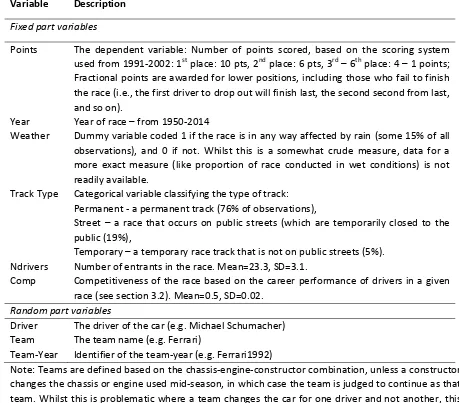Formula for success: Multilevel modelling of Formula One Driver and Constructor performance, 1950-2014
Full text
Figure




Related documents
For the design of AFPL2 we use the same methodology as for AFPL [12]: first a DSL with a set of selectors (or features) and syntaxes supported by all the analyzed firewall
Nonetheless, the maternal f orces of labor def ense, of ten used by the def ense to explain a brachial plexus injury in a newborn (of ten called an Erb's palsy injury 1 ), has
In this paper, we provide the first study on the impact of the systematic risks on a class of nonzero-sum stochastic differential games subject to systematic risks under a general
Figure 1.1 Intelligent compaction machine 2 Figure 2.1 The local area of a testing point 5 Figure 2.2 Quality measures collected in field test strip investigation 6 Figure
In the evolution of Internet markets around the world, a common development path has included initial growth in access networks, with most content sourced from abroad, followed
The applicability of STMs suggested by different codes and their modifications for deep beam specimens reinforced with steel or FRP bars, as well as the
We find that the group-based horizontal political inequalities highlighted in research on violent civil conflict clearly influence conflict origination but have no clear effect on
burgdorferi to elicit inflammation in vitro in differentiated human MO3.13 oligodendrocytes and in differentiated primary human oligodendrocytes, by measuring the concentration





